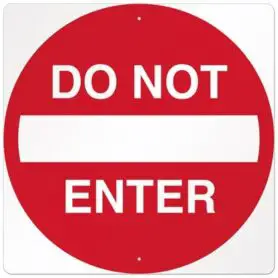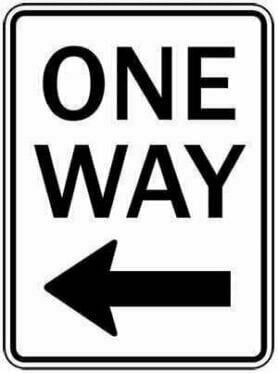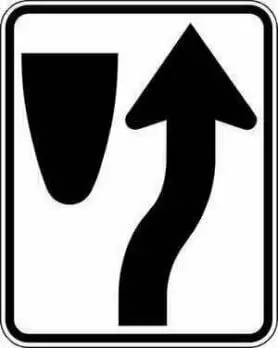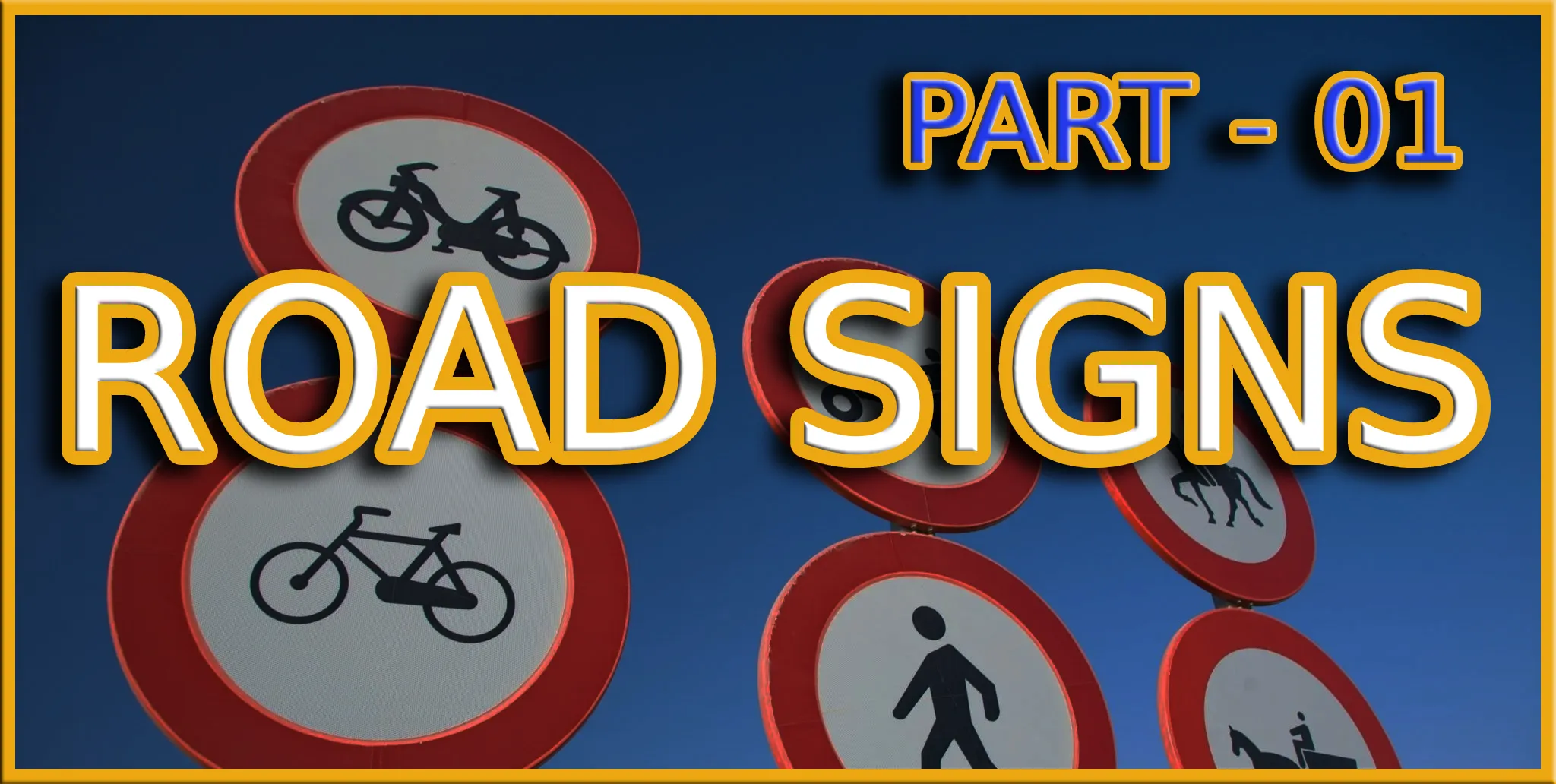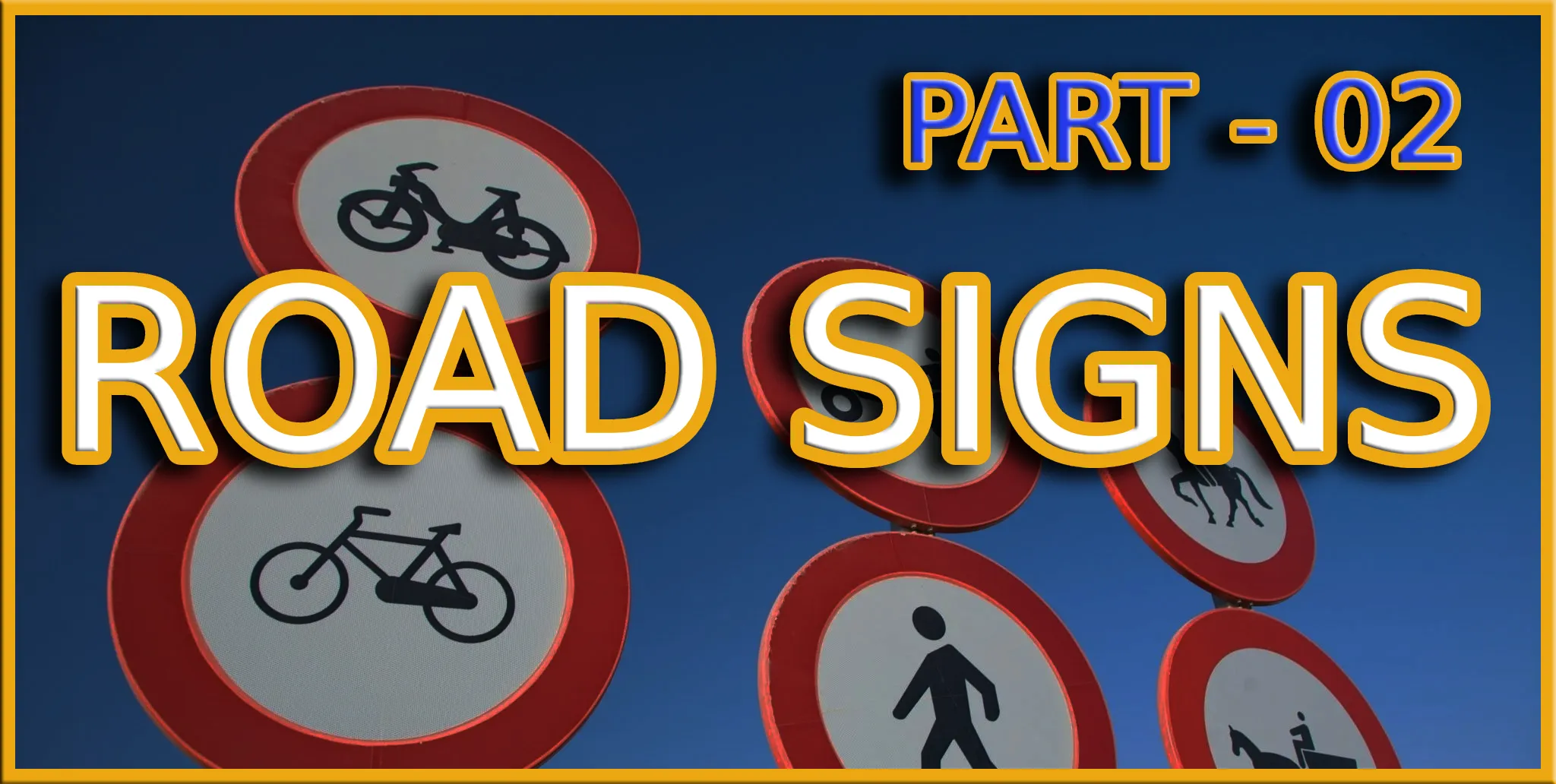Side Road Sign

Learn More about This Sign
What Does Side Road Sign Mean?
A side road sign, also known as a side road intersection warning sign, is a traffic sign designed to alert drivers to an upcoming intersection where a smaller road joins the main highway.
Characteristics:
- Shape: Typically diamond-shaped with a black border.
- Symbol: This can include a simple black line leading off to the side or a sideways “T” shape.
- Placement: Usually positioned on the right side of the road before the intersection.
Purpose:
- To warn drivers of potential merging traffic entering or exiting the highway.
- To encourage drivers to slow down and prepare for the upcoming intersection.
- To enhance overall safety on the highway by promoting awareness and caution.
Remember:
- This sign doesn’t tell you how far away the intersection is, so stay alert and anticipate its arrival.
- Watch out for vehicles entering or exiting the highway, and adjust your speed accordingly.
Similar Road Signs
Signaling at Side Roads
When approaching a side road, it’s important to signal your intention to turn or proceed. Signaling techniques play a crucial role in driver awareness and ensuring the safety of all road users. By using your vehicle’s turn signals, you communicate your intentions to other drivers, pedestrians, and cyclists, allowing them to anticipate your next move and adjust their actions accordingly.
To signal your intention to turn at a side road, activate your vehicle’s turn signal at least 100 feet before reaching the intersection. This gives other drivers ample time to react and adjust their speed or position. When turning right, use your right turn signal, and when turning left, use your left turn signal. Remember to cancel your turn signal after completing the maneuver to avoid confusion.
In addition to signaling your turns, it’s also important to use your hazard lights when approaching a side road and you need to slow down or stop suddenly. This alerts other drivers to the change in your speed or position and helps prevent rear-end collisions.
Myth of Right-of-Way
To truly understand safe signaling at side roads, it’s important to dispel the myth of right-of-way. Common misconceptions often lead to confusion and accidents. Many believe that having the right-of-way gives them the automatic privilege to proceed without caution. However, this isn’t true. Right-of-way is a legal concept that determines who’s the priority to proceed first in a specific situation. It doesn’t absolve anyone of the responsibility to communicate and exercise caution.
The importance of communication can’t be overstated when it comes to navigating side roads. Both drivers and pedestrians must communicate their intentions clearly to ensure a smooth and safe flow of traffic. This can be achieved through the use of turn signals, hand signals, eye contact, and even verbal communication when necessary. By effectively communicating their intentions, drivers and pedestrians can avoid misunderstandings and prevent accidents.
Safe Merging Techniques
Implementing proper merging techniques is essential for maintaining a smooth and safe flow of traffic. When merging onto a busy road, it’s important to practice defensive driving to ensure the safety of yourself and others. Here are some key tips for safe merging:
1. Plan ahead: As you approach the merge point, start preparing early. Check your mirrors and blind spots to be aware of surrounding vehicles.
2. Adjust your speed: Match the speed of the traffic on the main road. If necessary, accelerate or decelerate accordingly to find a safe gap.
3. Use your turn signal: Signal your intention to merge early, giving other drivers ample time to adjust their speed and make space for you.
4. Yield the right-of-way: Remember that drivers on the main road have the right-of-way. Wait for a safe gap before merging into traffic.
5. Be patient and cautious: Take your time and don’t rush into traffic. Be aware of other vehicles and adjust your position accordingly.
Legal Penalties for Disregard
If you fail to follow safe merging techniques, you may face legal penalties for disregarding traffic laws and regulations. The consequences of such actions can be severe, including fines and other legal repercussions.
When merging onto a main road, it’s essential to yield to oncoming traffic and wait for a safe gap before entering. Disregarding this rule not only puts yourself at risk but also endangers other drivers on the road. Traffic laws and regulations are in place to maintain order and ensure the safety of all road users.
If you’re caught disregarding safe merging techniques, you may be subject to fines. The exact amount of the fine will depend on the jurisdiction and the severity of the offense. In some cases, repeat offenders may face higher fines or even have their driver’s licenses suspended.
It is important to remember that safe merging isn’t only a matter of following traffic laws, but also a matter of courtesy and consideration for others. By practicing safe merging techniques, you not only avoid legal penalties but also contribute to a safer and more efficient flow of traffic.
Significance of Yielding
Yielding plays a crucial role in maintaining safe and efficient traffic flow. It isn’t just a legal requirement, but also a matter of courtesy and driver awareness. When you yield to other vehicles, you’re allowing them to proceed safely, without disruption or delay. This simple act of courtesy helps to prevent accidents and congestion on the roads.
By yielding, you’re demonstrating your awareness of the surrounding traffic and your willingness to cooperate with other drivers. This promotes a harmonious and efficient traffic flow, reducing the chances of conflicts or collisions. It also helps to create a positive driving culture where everyone is considerate of each other’s needs and safety.
Driver awareness is key when it comes to yielding. You must pay attention to road signs, signals, and the behavior of other drivers. Look out for yield signs, which indicate that you should give the right of way to other vehicles. Additionally, be aware of situations where yielding is necessary, such as when merging onto a highway or when entering a roundabout.


